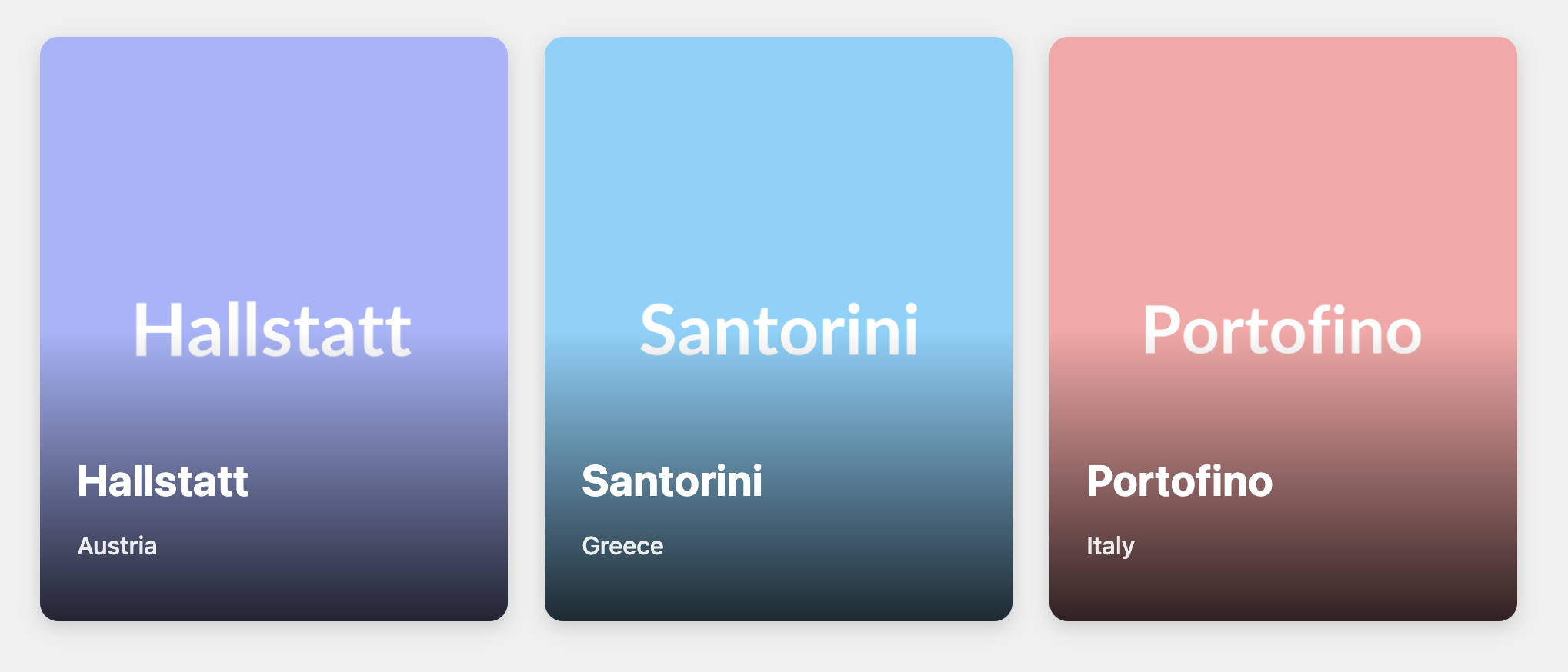Destination Highlight Card
Showcase travel destinations or featured locations with this visually immersive and elegant highlight card.
This design prioritizes a high-quality image by making it the full background of the card. The destination's name and country are overlaid on top, using a subtle gradient to ensure the text is always clear and readable.

About this Component
This component uses CSS positioning and layering to make the entire card a single, clickable link leading to more details about the location. On hover, the background image subtly zooms in to provide a rich, interactive experience. The text overlay remains stationary at the bottom, creating a clean effect.
Features
- Full-Bleed Image: The destination image covers the entire card for maximum visual impact.
- Text Overlay with Gradient: A semi-transparent gradient at the bottom ensures text is always legible against any background photo.
- Hover Zoom Effect: The background image gently zooms on hover, adding an elegant micro-interaction.
- Single Clickable Area: The entire card is a valid, single link, making it easy for users to tap or click.
Code Breakdown
HTML Structure
The card is an article. Inside, a single anchor tag (a) wraps all the visible elements (the background img and a div) for the textual content. The destination name is an h3 with a unique id that is referenced by the link's aria-labelledby attribute for accessibility.
CSS Styling
The card (.dest-card) is set to position: relative, which serves as the positioning context. The a tag inside is a flex container that fills the entire card. The img element is then absolutely positioned with inset: 0 to fill the entire card, and given a low z-index: 1 to sit at the back. A CSS pseudo-element (::before) on the link creates the gradient overlay and is given a z-index: 2 to sit above the image. Finally, the content div is given a position: relative and a higher z-index: 3, which ensures it always appears on top of the image and the gradient.
Code
Here's the complete, self-contained code. This component is perfect for building a visually-driven gallery of places.